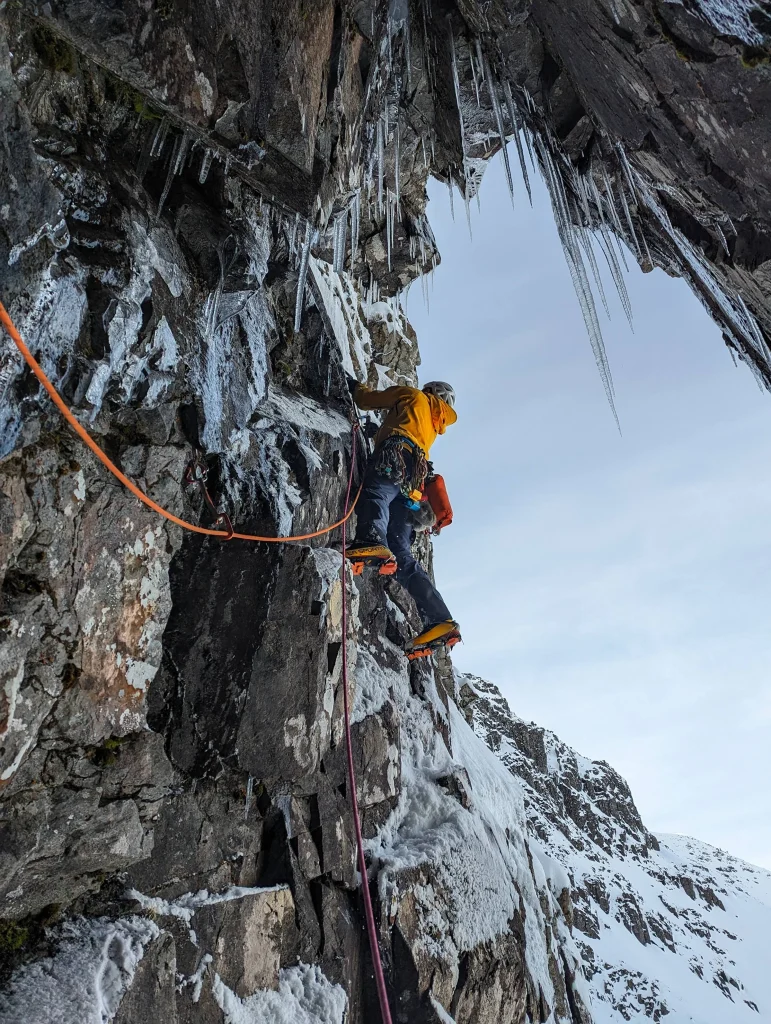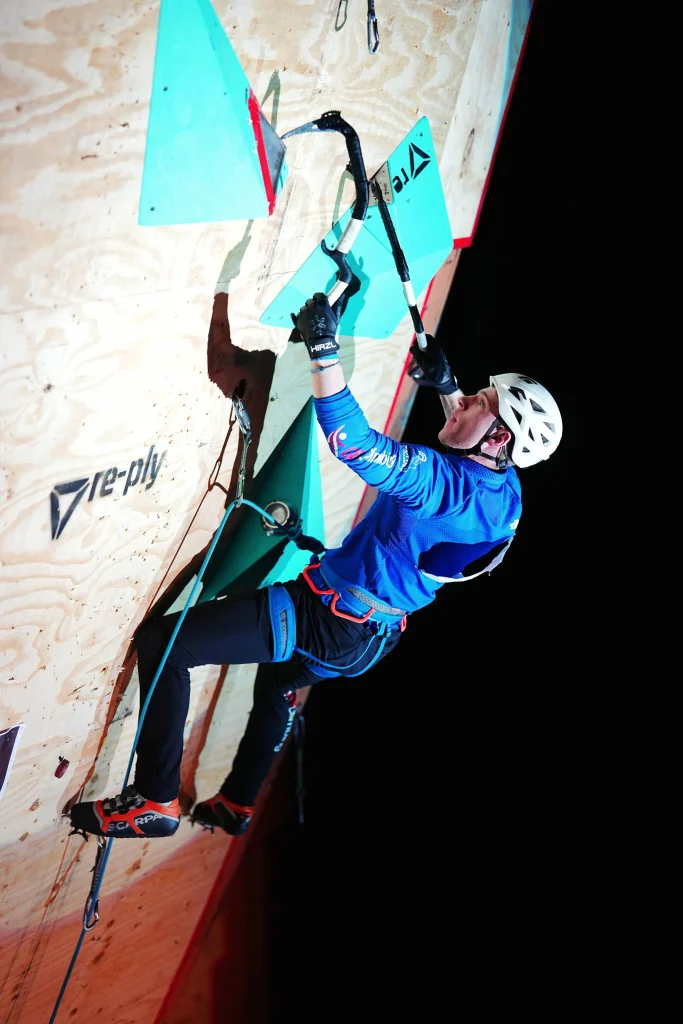Dry-Tooling (n.): Climbing with ice axes and crampons when there’s no ice present. It’s a cross between ice climbing and rock climbing—which makes it great training for both!
Outdoors, Dry-Tooling takes place mostly on rock walls and large caves. Indoors, it takes place on plywood walls with specialised plastic, metal, and resin holds.
Dry-Tooling has its roots in mountaineering. When alpinists ventured into high mountain ranges aiming to reach new summits, they generally tried to follow as many snowfields and ice routes as possible. However, sometimes a direct line of snow and ice leading to the summit wasn’t available.
At times, dry rock sections would interrupt the route between icy stretches. Yet, climbing these rock sections presented challenges. In freezing conditions, it’s often too cold for climbers to use rock shoes or climb with bare hands. Dry-Tooling, however, enables them to navigate between patches of ice and snow without removing their winter gear.
A key advantage of Dry-Tooling is that crampons and ice axes are exceptionally narrow, letting climbers use miniscule edges and thin cracks that fingers and regular shoes wouldn’t fit into. Because of this, the movements and terrain involved in Dry-Tooling are quite different from those in traditional rock climbing.

A lot of the climbing done here at the Toolbox is inspired by competition ice climbing, though the term “competition ice climbing” is somewhat misleading. While Ice Climbing World Cup routes sometimes include hanging ice barrels or short ice walls, most of the climbing actually occurs on artificial structures. The plywood allows climbers to continue the style of ice climbing, kicking their feet into the wall, regardless of the angle of the terrain or the temperature of the venue.
This approach evolved gradually. The earliest ice climbing competitions, took place on natural frozen waterfalls and other vertical ice formations. However, because vertical ice is relatively straightforward to climb, it doesn’t present enough of a challenge for the elite competitors of today. Although overhanging ice would be ideal, it’s rare to find a waterfall with that kind of structure in nature.
Another challenge with pure ice competitions is consistency—each competitor faces a different course. The first climber has to carve out each pick placement and foothold, while later climbers simply use the established holds, making it easier for them.
To ensure a level playing field and heighten the difficulty, organisers started building custom-made structures specifically for these events. This led to the development of modern, overhanging competition walls.
In recent years, competition ice climbing has evolved significantly. Traditional hanging ice has been replaced by wooden cubes and other suspended obstacles, and large plastic holds have given way to intricate metal ones. The climbing style has shifted, becoming more gymnastic, more dynamic, and a lot more exciting.

